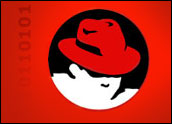
Red Hat’s Fedora Project has released the Fedora 7 version of the Linuxoperating system, which features a new build capacity allowing for the creation ofcustom appliances to meet individual needs.
Fedora 7 offers users an appliance development platform that it says is 100 percent opensource, with an entirely free distribution build tool chain. The Fedora 7 source codeis hosted in a public version control system, the RPMs (Red Hat Package Manager) are built on an external build system and the distributions are built with an external, open source composingtool that allows access by the entire Fedora community.
“We hope developers will share what they create, but there is no obligation for them to do so,” Jack Aboutboul, community engineer at Red Hat, told LinuxInsider. “We are discussing how we can create an online spot within our community where developers can offer the appliances they developed, but it won’t be an official packet release within the Fedora 7 distribution.”
Attract Outsiders
Fedora’s major goal the last few years has been to allow proven non-Red Hat contributors to have greater influence and access to the Fedora Project, Max Spevack, Fedora project leader at Red Hat, wrote on the company’s blog. This flexible, public build environment gives Fedora 7 users the ability to customize the operating system’slive CD, DVD and USB technologies.
After customization, developers can load Fedora onto various forms of bootablemedia, allowing users to run their operating systems without a hard diskinstallation.
From the technical side, the attraction of non-Red Hat contributors has been pushedforward by the Fedora Extras and the Fedora Infrastructure projects, according to Spevack.
Red Hat Differences
“Fedora 7 development has focused on improving the manner in which all Fedorareleases will be made,” said Spevack. “Beyondthe usual set of upstream changes and improvements, our latest release is by far themost exciting and flexible to date. The ability to create appliances to suit everyparticular user need is incredibly powerful.”
The Fedora 7 release is an upstream development for what will eventually get into the Red Hat Enterprise Linux versions, explained Aboutboul. It will be subjected to two years’ worth of testing before Red Hat puts the components of Fedora 7 into its commercial Linux product.
While both the commercial version and the newer Fedora 7 come from the same core code, they are really two different Linux distributions. Only the commerical release comes with training and support that is built around Red Hat Enterprise Linux, Aboutboul explained.
Fedora 7 offers Kernel-based Virtual Machine (KVM) and Qemu virtualizationtechnologies in addition to Xen. All implementations can be managed using theFedora graphical virtualization manager.
KVM provides a full virtualization solution, letting users choose from KVM, Xen orQemu.
Open Packages
The Fedora 7 release merges the separate repositories the community maintained for softwarepackages for the Fedora OS and Fedora Extras project. Fedora Extras are sets of packages thatsupplement the Fedora Core but do not replace Fedora Core component packages. Now both Red Hatemployees and community members can access the entire Fedora repository in one location.
The Fedora Project is a different Linux distribution than the Red Hat EnterpriseLinux (RHEL). Red Hat Enterprise Linux targets the commercial market, includingmainframes. It is provided for free, but customers pay for support.
Red Hat’s Fedora Project, which sponsored the release of Fedora 7, is a Linux-basedoperating system using the Fedora Core. Fedora is developed by volunteers comprisingthe Fedora community. Fedora distributions are free for anyone to use, modify anddistribute.





















































